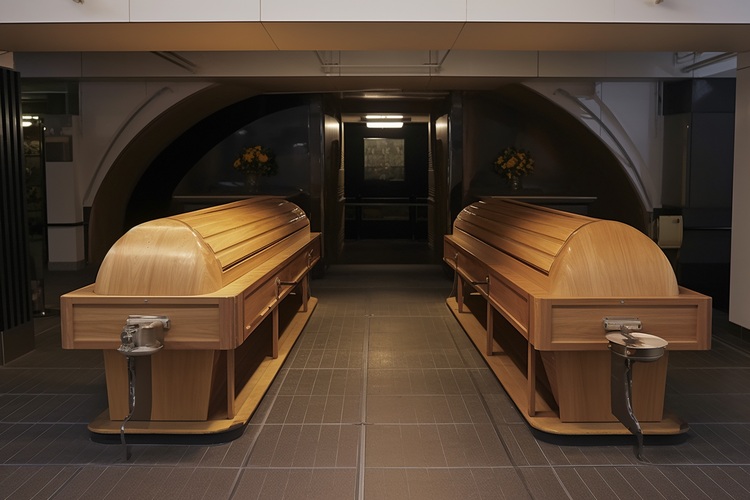The Truth About Cremation in 2025: Process and Costs
Cremation is becoming more common in 2025, but many families still have questions about how it works and what it costs. From preparation and the cremation chamber to urn selection and memorial options, this guide explains the process, costs, and what to expect every step of the way.

How Does the Cremation Process Work Step by Step
The cremation process step by step begins with proper authorization and preparation. After death, the deceased is transported to a crematory facility where identification procedures ensure accuracy throughout the process. The body is prepared by removing medical devices like pacemakers, which can be dangerous during cremation, and placing it in a combustible container or casket.
The actual cremation takes place in a specialized furnace called a retort, where temperatures reach between 1,400 to 1,800 degrees Fahrenheit. This process typically takes two to three hours, depending on body size and composition. After cooling, any remaining metal fragments are removed using magnets, and the remaining bone fragments are processed into a fine, sand-like consistency commonly referred to as ashes or cremated remains.
The cremated remains are then placed in a temporary container or an urn selected by the family. Most crematories provide a basic plastic or cardboard container, though families often choose to transfer the remains to a more permanent memorial urn of their choosing.
Understanding Cremation Costs and Provider Comparison
Cremation costs vary significantly based on location, services selected, and provider pricing structures. Basic direct cremation, which includes only the essential services without a funeral ceremony, typically ranges from $800 to $3,000 across different regions. Full-service cremation with memorial services, viewing, and additional arrangements can cost between $3,000 to $8,000 or more.
Funeral homes, standalone crematories, and online cremation services each offer different pricing models. Traditional funeral homes often charge higher fees but provide comprehensive services and facilities. Standalone crematories may offer more competitive pricing for basic services, while online cremation providers have emerged as budget-friendly alternatives, though they may have limited local presence for families who prefer in-person arrangements.
Cremation vs Burial Pros and Myths
When comparing cremation vs burial pros and myths, several practical considerations emerge. Cremation typically costs less than traditional burial, requires no ongoing cemetery maintenance fees, and offers greater flexibility for memorial services and final disposition of remains. Families can scatter ashes in meaningful locations, divide remains among family members, or keep them in memorial urns.
Common myths about cremation include concerns about completeness of the process or mixing of remains. Modern crematories follow strict identification protocols and legal requirements to ensure accuracy. Another misconception involves religious restrictions, though many faiths now accept cremation as an appropriate choice, though practices vary among different denominations and cultural traditions.
Environmental considerations also factor into decisions, with cremation requiring less land use than burial but producing carbon emissions, while green burial and bio-cremation options offer more environmentally conscious alternatives for families prioritizing sustainability.
Modern Cremation Options and Urn Selection
Modern cremation options and urn selection have expanded significantly, offering families numerous ways to memorialize their loved ones. Alkaline hydrolysis, also known as water cremation or aquamation, uses water and potassium hydroxide to break down the body, producing similar results to flame cremation with reduced environmental impact.
Contemporary urn options range from traditional materials like wood, metal, and ceramic to biodegradable options for scattering or eco-friendly burial. Keepsake urns allow families to divide remains, while jewelry urns provide discrete memorial options. Some families choose creative alternatives like incorporating ashes into memorial reefs, diamonds, or glass artwork.
Scattering services have also evolved, with companies offering aerial scattering, ocean scattering, and guided scattering in national parks or other meaningful locations, subject to local regulations and permit requirements.
Planning Cremation Services in Advance
Planning cremation services in advance offers both financial and emotional benefits for families. Pre-planning allows individuals to research options thoroughly, compare pricing, and make decisions without time pressure or emotional stress. Many providers offer pre-payment plans that lock in current pricing and protect against future cost increases.
When pre-planning, consideration should be given to desired services, memorial preferences, and final disposition of remains. Documentation should be easily accessible to family members, including copies of contracts, preferred providers, and specific wishes for ceremonies or celebrations of life.
Advanced planning also allows families to communicate preferences clearly, reducing potential conflicts or uncertainty during grieving periods while ensuring personal wishes are honored according to individual values and beliefs.
| Provider Type | Basic Direct Cremation | Full Service Cremation | Additional Services |
|---|---|---|---|
| Traditional Funeral Home | $2,500 - $4,500 | $4,000 - $8,000 | Chapel, viewing, coordination |
| Standalone Crematory | $1,200 - $2,800 | $2,500 - $5,000 | Limited facilities, lower overhead |
| Online Cremation Service | $800 - $2,200 | $2,000 - $4,500 | Remote coordination, basic options |
Prices, rates, or cost estimates mentioned in this article are based on the latest available information but may change over time. Independent research is advised before making financial decisions.
Making Informed Cremation Decisions
Cremation continues to evolve as a dignified, practical option for end-of-life arrangements. Understanding the process, costs, and available options empowers families to make choices aligned with their values, beliefs, and financial circumstances. Whether planning in advance or making immediate arrangements, thorough research and clear communication with providers ensures that cremation services meet family needs while honoring the memory of loved ones appropriately. As cremation technology and options continue developing, families benefit from staying informed about new alternatives and pricing structures in their local areas.




